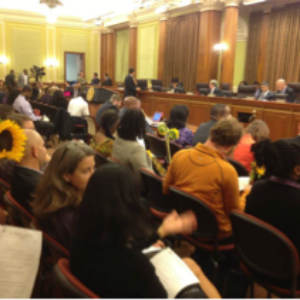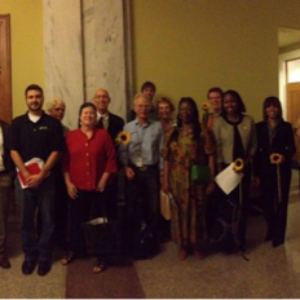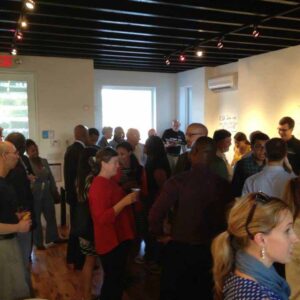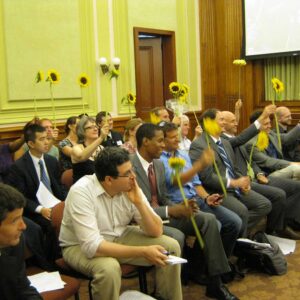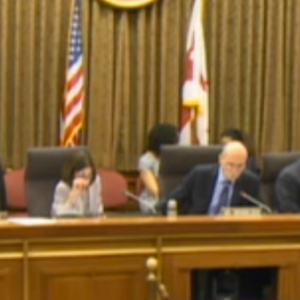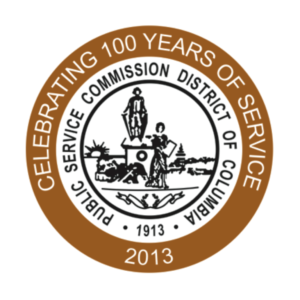Community solar in D.C.
- Factsheet
What is community solar?
Hundreds of D.C. homeowners have put solar on their homes. But what about those who live in apartment buildings or whose roofs can’t support solar panels? Community solar makes it possible for everyone to go solar.
With community solar, you can purchase or lease a “share” in a community solar project or start a project with your neighbors. Every month, you receive a credit on your electricity bill for the energy produced by your share.
Prefer to watch a video? Check out Episode 1, Community Solar Basics: Consumers.
Community solar in D.C.
D.C.’s community solar policies allow for a wide range of project models.

How is electricity from community solar credited on my bill?
- A subscriber organization decides to build a community solar project (also known as a community renewable energy facility, or CREF). The organization identifies individual subscribers that want to subscribe to the project.
- The subscriber organization then sends Pepco a CREF project application and provides Pepco with a list of the individuals that will be subscribing to the project, and the percentage of the system’s production that each individual will receive.
- Pepco receives and processes the CREF project application and the subscriber information.
- Once the CREF is constructed and complete, the subscriber organization receives final interconnection approval from Pepco.
- At the end of each month, Pepco calculates how much energy the CREF has produced and divides that production among the individual subscribers based on the allocation indicated by the subscriber organization. Those credits appear on the subscriber’s electric bill.
Setting up a community solar project
Community solar projects must be registered with Pepco. If you’re a community solar project developer, visit Pepco’s website to register your solar, file for interconnection, and register subscribers for a project.
What is the value of electricity generated from community solar?
The credit rate for community solar was established through a long process at the PSC. At first, the PSC did not credit transmission and distribution charges as part of the community solar credits. This meant community solar subscribers would earn significantly less than what they would if they went solar by installing panels on their home. This less than full rate has meant few community solar projects have been built in D.C. even though the legislation to create the community solar program was passed unanimously by the D.C. Council in 2013.
We successfully led D.C. solar supporters in the fight to bring the rate for community solar in line with the rate solar homeowners receive. In 2016, the D.C. Council passed legislation to ameliorate this problem and the full credit rate was restored by D.C. PSC rule-making in January 2017.
The current credit rate equals the full Standard Offer Service (SOS) rate for General Service Low Voltage Non-Demand Customer class or its successor, as determined by the PSC. Pepco maintains detailed information on the program.
Subscribe to a project
We have a list of projects with helpful information about them. Click the button below to see what’s available.
D.C. resources
- Shopping for Community Solar – Solar United Neighbors’ guide helps you get started
- Legislative information about Community Renewables Energy Act – The D.C. Council’s page detailing the legislative history of the bill.
- Final bill, as adopted by the D.C. Council
- Pepco community solar general info
- Pepco community solar resources
- Pepco subscriber organization portal
History of community solar in D.C.
It took many years for D.C.’s solar activists to establish a community solar program in the District.
2011–2013
We worked with a broad coalition of community groups to pass legislation to make community solar possible.
October 1, 2013
The D.C. Council passed the Community Renewables Energy Amendment Act of 2013. The passage of this legislation began a process at the D.C. Public Service Commission (PSC), to finalize the rules for the District’s community solar program. The law gives all utility ratepayers access to on–bill community solar credits for any community solar system they subscribed to or owned. The electricity produced by a subscriber’s portion of the solar installation is credited to their monthly electric bill. The passage of this legislation began a process at the PSC, to finalize the rules for the District’s community solar program.
2014–2015
The PSC conducts a proceeding to formalize the rules for community solar.
April 2015
The PSC issued its final ruling for the Community Renewables Energy Act of 2013 (CREA). The commission ruled D.C. residents who use community net metering to gain access to solar would not be refunded for the full value of their solar production. They would receive the full rate minus taxes, fees, distribution and transmission rates. This created a “second tier” of solar subscribers — property owners versus those who rent, live in high-rise buildings, or have a shaded roof. CREA was passed in order to serve the latter, but the PSC’s proposed rule undercut its original purpose by reducing the solar credit earned by the people who needed it the most.
June 2016
The 2017 Budget Support Act amends the Community Renewable Energy Credit Rate Clarification Amendment Act of 2016 to restore the full retail distribution rate credit for power sent back into the grid from Community Renewable Energy Facilities (CREFs). The update restores full 1:1 credit to residential customer subscribers.
January 2017
The Public Service Commission issues rules for community solar that include a full credit rate for community solar projects. This will enable community solar projects to be built in the District.
Take action in D.C.
Get the latest on solar straight to your inbox.
Fight for your solar rights.
Everyone has the right to go solar. Spread the sunshine nationwide and in your local community by taking action, joining events, and more.
